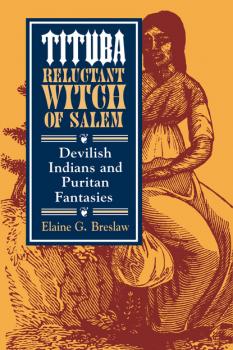ТОП просматриваемых книг сайта:
Elaine G. Breslaw
Список книг автора Elaine G. BreslawАннотация
In this important book, Elaine Breslaw claims to have rediscovered Tituba, the elusive, mysterious, and often mythologized Indian woman accused of witchcraft in Salem in 1692 and immortalized in Arthur Miller's The Crucible . Reconstructing the life of the slave woman at the center of the notorious Salem witch trials, the book follows Tituba from her likely origins in South America to Barbados, forcefully dispelling the commonly-held belief that Tituba was African. The uniquely multicultural nature of life on a seventeenth-century Barbadan sugar plantation—defined by a mixture of English, American Indian, and African ways and folklore—indelibly shaped the young Tituba's world and the mental images she brought with her to Massachusetts.Breslaw divides Tituba’s story into two parts. The first focuses on Tituba's roots in Barbados, the second on her life in the New World. The author emphasizes the inextricably linked worlds of the Caribbean and the North American colonies, illustrating how the Puritan worldview was influenced by its perception of possessed Indians. Breslaw argues that Tituba’s confession to practicing witchcraft clearly reveals her savvy and determined efforts to protect herself by actively manipulating Puritan fears. This confession, perceived as evidence of a diabolical conspiracy, was the central agent in the cataclysmic series of events that saw 19 people executed and over 150 imprisoned, including a young girl of 5.A landmark contribution to women's history and early American history, Tituba, Reluctant Witch of Salem sheds new light on one of the most painful episodes in American history, through the eyes of its most crucial participant.
Информация о книге
Автор произведения Elaine G. Breslaw
Аннотация
Health in early America was generally good. The food was plentiful, the air and water were clean, and people tended to enjoy strong constitutions as a result of this environment. Practitioners of traditional forms of health care enjoyed high social status, and the cures they offered—from purging to mere palliatives—carried a powerful authority. Consequently, most American doctors felt little need to keep up with Europe’s medical advances relying heavily on their traditional depletion methods. However, in the years following the American Revolution as poverty increased and America’s water and air became more polluted, people grew sicker. Traditional medicine became increasingly ineffective. Instead, Americans sought out both older and newer forms of alternative medicine and people who embraced these methods: midwives, folk healers, Native American shamans, African obeahs and the new botanical and water cure advocates. In this overview of health and healing in early America, Elaine G. Breslaw describes the evolution of public health crises and solutions. Breslaw examines “ethnic borrowings” (of both disease and treatment) of early American medicine and the tension between trained doctors and the lay public. While orthodox medicine never fully lost its authority, Lotions, Potions, Pills, and Magic argues that their ascendance over other healers didn’t begin until the early twentieth century, as germ theory finally migrated from Europe to the United States and American medical education achieved professional standing.


